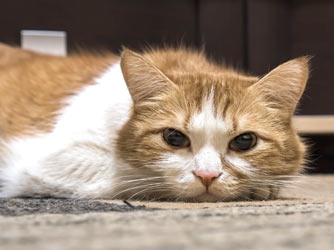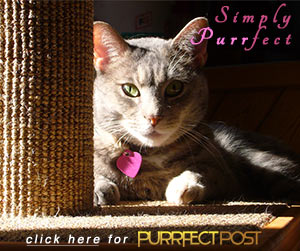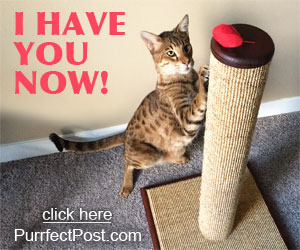Fatty Liver Disease in Cats (Hepatic Lipidosis)

Fatty liver disease is the most common form of liver failure in cats. The cat is a carnivorous species, ingesting large amounts of protein in the wild. Being overweight was never in the cards for cats that hunted to survive. However, today's indoor cats are much more likely to become overweight. Then, if they drastically decrease or stop their food intake, those fat stores are mobilized to be converted to energy to keep the cat alive. However, the feline liver, not being used to handling large amounts of fat, is not able to metabolize it properly and liver failure can result.
The liver's main jobs are to break down proteins, produce digestive chemicals, aid in metabolism, produce coagulation factors (to aid in blood-clotting), handle the decomposition of red blood cells, and detoxify the body. In liver failure, these are the things that suffer.
Breeds, Ages, and Gender of Cats Commonly Affected by Fatty Liver Disease
Often, fatty liver disease is diagnosed in middle-aged or older cats but there are no breed or gender predilections.
Presentation and Signs of Fatty Liver Disease in Cats
- Rapid weight loss, usually of a previously overweight animal, precedes the development of fatty liver disease in cats.
- Vomiting may be present in a cat with Fatty Liver Disease, but not always.
- Cats with fatty liver disease are often not eating or are not eating nearly the amount that they were before.
- Lethargy, depression, and not acting playful are all signs that are seen in cats with fatty liver disease.
- 70% of cats affected by fatty liver disease will have jaundice. This is a yellowing of the white part of the eyes and sometimes the skin and gums; it is the result of the liver's inability to deal properly with decomposing red blood cells. A yellow substance called bilirubin is released from the dying cells into the cat's system rather than being cleared by the liver. Jaundice may not be obvious to a cat owner, but a veterinarian will find the discoloring during a physical exam.
Causes of Fatty Liver Disease in Cats
It generally requires around two weeks of eating 3/4 or less of a cat's normal food intake to develop fatty liver disease. There is always an underlying cause for the sudden sharp decrease in appetite. The most common of these causes are:
- Pancreatitis: an inflammation of the pancreas caused by a fatty diet (or getting into something fatty), cancer, or trauma
- Cancer
- Other simultaneous liver disease
- Aggressive weight loss programs instituted by the owner
- Stress in the household: A new person or animal in the home or a change in the owner's schedule
- Being lost and unable to find routine meals
Diagnosis of Fatty Liver Disease in Cats
Your veterinarian will use several criteria to arrive at a diagnosis fatty liver disease.
- History: A complete account of any signs that you have noticed leading up to your cat becoming sick, as well as any changes that have occurred in the household, will aid your veterinarian in diagnosing fatty liver disease. This will include the information that your cat was overweight but lost a significant amount of weight in a short period of time.
- Examination: A thorough veterinary examination of your cat may reveal clues to the presence of fatty liver disease such as pain in the abdomen, an enlarged liver, or jaundice in the whites of the eyes or parts of the skin.
- Screening Bloodwork: If your veterinarian suspects fatty liver disease based on the history and physical exam, some screening bloodwork may be performed. There are several blood values that may be elevated when liver disease is present: ALT, AST, and ALP. An increase in ALP is always significant in a cat, though it does not always indicate a liver-specific problem.
- Liver Function Tests: If a high ALP is noted on a screening panel, liver function tests may be performed to narrow the problem down to the liver. The most common of these is the Bile Acids Test, which challenges the liver to do a specific job, then measures its ability to do so. During Fatty Liver Disease, the cat's liver is not functioning well, so these test results will be abnormal.
- Ultrasound: This specialized form of radiology, when performed on the abdomen of a cat with fatty liver disease, may reveal that the liver is generally enlarged. Conversely, certain types of cancer or other liver conditions may result in the enlargement of only a portion of the liver, or a lumpy appearance rather than a general enlargement.
- Needle Aspirate or Biopsy: Once your cat's problem is narrowed down to the liver, a needle aspirate or biopsy can be performed in order to retrieve a sample of liver tissue. This is the only definitive way to diagnose the specific cause of the liver malfunction. Fat droplets found inside of the liver cells means that fatty liver disease is present.
Treatment of Fatty Liver Disease in Cats
The treatment of fatty liver disease in cats is aimed at reversing the malnutrition caused by the increase of fat and the decrease of protein supplied to the liver.
-
Fluid therapy is helpful for supportive care of any cat that is not eating or drinking well. This may be done through an intravenous catheter as inpatient therapy or subcutaneously as outpatient therapy or by the owners at home.
-
Getting the proper amount of a high protein diet into your cat is crucial for reversing the effects of Fatty Liver Disease. Your veterinarian will determine the best diet to use for your cat's age and circumstances. Because fatty liver disease is triggered by a decrease in appetite and the liver dysfunction results in a further decrease in the desire to eat, getting the appropriate type and amount of food necessary into your cat can be exceptionally difficult. Below are some of the feeding methods that your veterinarian may employ:
- Force- feeding may be required in a cat that doesn't want to eat on his own. Your veterinarian may do this on an inpatient basis or may teach you to do it at home in certain situations. Force-feeding of cats with fatty liver disease often does not work to reverse the illness because it is stressful for the cat and it can be very difficult to get enough food into him in this manner.
- A nasogastric tube, placed through one side of your cat's nose and into the stomach, may be used if your cat isn't accepting force-feeding well.
- A stomach tube may be placed through the cat's side and directly into the stomach for easy feeding. This requires general anesthesia, so your veterinarian may need to treat your cat for a period of time with one of the methods above until he becomes strong enough to handle the procedure. A stomach tube is very comfortable for your cat and can be kept in place for four to six weeks.
-
There are several medications that may be necessary for a cat with fatty liver disease.
- Ursodiol: This medication is used for many types of liver disease. It increases the flow of bile acids and reduces the workload on the liver.
- SAMe: This is an antioxidant that can help decrease further cell damage in the liver.
- Taurine: This amino acid is required in cats and may need to be supplemented during illness, when your cat hasn't been taking in enough of it with normal feedings.
- Vitamin K: This vitamin is necessary for proper blood clotting and often needs to be supplemented in cats with fatty liver disease to avoid blood loss.
- Vitamin B12: This vitamin may need to be supplemented during the treatment of Fatty Liver Disease.
- Potassium: Cats with fatty liver disease may be deficient in potassium and may need supplementation.
- Blood transfusion: Many cats will need a blood transfusion during the treatment of fatty liver disease because of the loss of blood resulting from a decrease in blood clotting factors that are normally produced by the liver.
Home Care of Fatty Liver Disease in Cats
Sometimes force-feeding, fluids, and medications can be administered at home but treatment must be aggressive and the correct amount of food must be successfully ingested if the cat is to survive. There is a short window of time to intervene and reverse the effects of fatty liver disease, so home care must be approached prudently.
Prevention of Feline Fatty Liver Disease
- Avoid crash diets. Always consult your veterinarian before beginning a weight loss program.
- If your cat doesn't eat for two days, take him to the veterinarian.
- Take your cat to the veterinarian any time you notice unexpected weight loss.
Prognosis of Fatty Liver Disease in Cats
The prognosis for a cat with fatty liver disease is very good (around 90% recovery) when it is treated appropriately and aggressively. Without treatment, most cats will die. Also, the underlying condition that caused the cat to stop eating in the first place must be identified and addressed.
You May Also Like These Articles:
Cat Weight Loss: How You Can Help Your Cat Lose Weight
Hands-On Guide to Checking if Your Cat Is at a Good Weight
Obesity In Cats: Overview of Dangers and Solutions
How To Know When Your Cat Is Sick
Notice: Ask-a-Vet is an affiliated service for those who wish to speak with a veterinary professional about their pet's specific condition. Initially, a bot will ask questions to determine the general nature of your concern. Then, you will be transferred to a human. There is a charge for the service if you choose to connect to a veterinarian. Ask-a-Vet is not manned by the staff or owners of CatHealth.com, and the advice given should not delay or replace a visit to your veterinarian.






